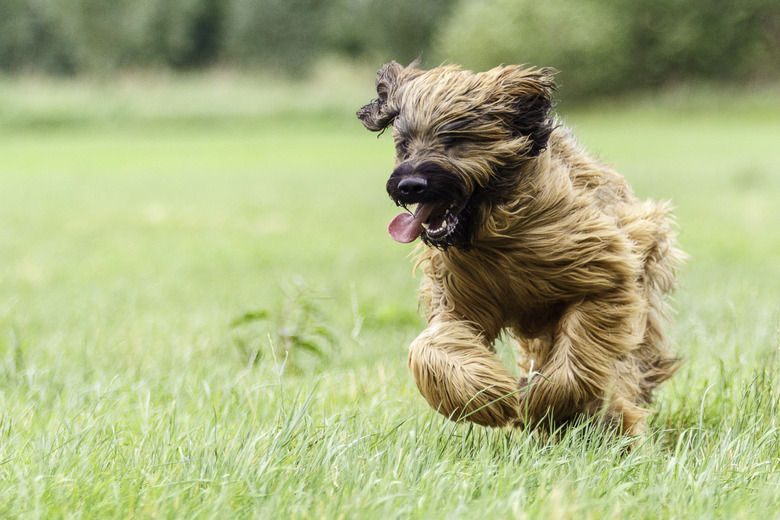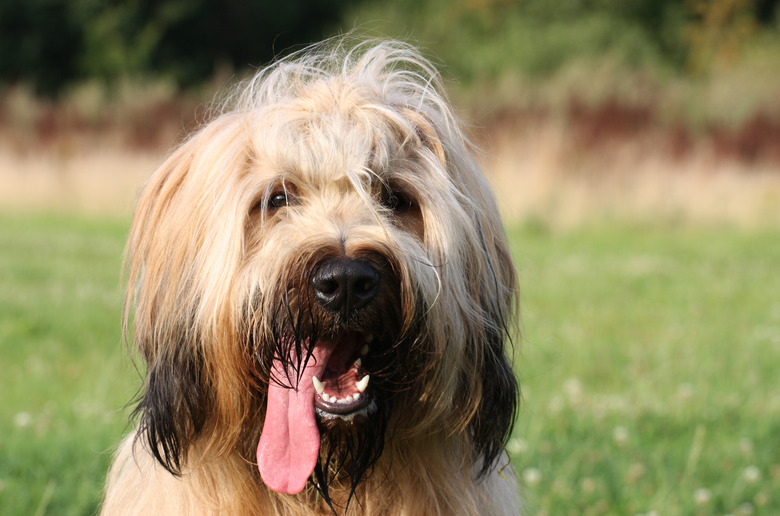Briard Dog Breed Facts & Information
Before bringing a new family dog into the home, dog owners need to consider the breed's personality, energy level, and grooming needs. The briard can be a good choice for a family willing to put in the time to groom, exercise, and train these large dogs.
Briard dog history
The briard dog breed originated in France. In early times, the briard was used as a guard dog to defend their charges against wolves and poachers. After the French Revolution, the briard job was transformed into herding tasks, such as making sure that their owner's sheep were kept within the unfenced boundaries of the pasture. The briard dog was brought to the United States by Thomas Jefferson and Marquis De Lafayette.
Briard dog characteristics
The purebred briard is a member of the American Kennel Club's herding group. They are large dogs weighing between 55 and 100 pounds. Males tend to be a bit bigger than females and can grow 23 to 27 inches tall, while females grow 22 to 25.5 inches tall.
Briards have a long, wavy double coat. The three coat colors are gray, tawny, and black. Some dogs may have a small white spot on the chest or a scattering of white hairs over the body, but fully white briard dogs are not allowed under the breed standard.
Their long coat gives them a rugged appearance with a long head. The hair is typically parted in the middle, and the dogs also have an impressive beard and eyebrows.
Briard dog temperament & training
Breed is not a reliable indicator of temperament; however, the briard is described as confident, faithful, and smart. They tend to have a protective streak and can make a good watchdog. As a herding dog, they may attempt to herd children and pets, so be sure to supervise these interactions.
Briards are intelligent, but as herding dogs, they were bred to make decisions on their own. This streak of independence can make training a bit of a challenge. Stick with positive reinforcement and opt for short, interesting training sessions so they don't get bored. Socialization with other dogs, people, and environments is also important.
Briard dog grooming
Despite the copious amount of hair these dogs have, they are actually low shedders. They do need frequent grooming, however. Use a pin brush to groom the briard's long hair several times per week. Be sure to not only brush the outer coat but also comb all the way to the skin to remove all the tangles. Their undercoat sheds twice per year, and using an undercoat rake during these times can help you remove loose hair.
You can also bathe the briard as needed. Frequency depends on your lifestyle and how dirty your briard gets. Be sure to clean the ears and trim the toenails regularly.
Briard dog exercise & health
Briard dogs have a moderate energy level, but they are working dogs and need daily activity. Consider taking your pup for a run or bike ride or enjoy a game of fetch to meet the briard's exercise needs. Consider participating in a canine sport that will also offer mental stimulation, such as agility or obedience. Briards can also excel as search and rescue dogs.
The expected life span of a briard is 12 years. Responsible breeders will test their dogs for hereditary health problems. This allows them to only breed a healthy dog. There are a number of health conditions common to this breed, including hip dysplasia, cancer, kidney disease, and exocrine pancreatic insufficiency. Eye health issues are also a concern, including cataracts, corneal dystrophy, retinal folds, and congenital stationary night blindness.
Briard dog puppies
Briard puppies will typically grow into their full adult size by the time they are 16 months old, although some larger males may continue to grow until about 19 months of age. As with other breeds, most of that growth occurs during the first year of life.
At 3 months of age, male briards typically weigh between 23 and 31.8 pounds, while females weigh 19.8 to 27.9 pounds. By 6 months of age, males grow to weigh 42.7 to 59.3 pounds, while females grow to weigh 36.8 to 52.1 pounds.
If you decide the briard is the right dog breed for you, the Briard Club of America offers educational opportunities to learn more about the breed and participate in canine sports and activities with your new pup.
Read more about German shepherds. Read more about different beagles.

